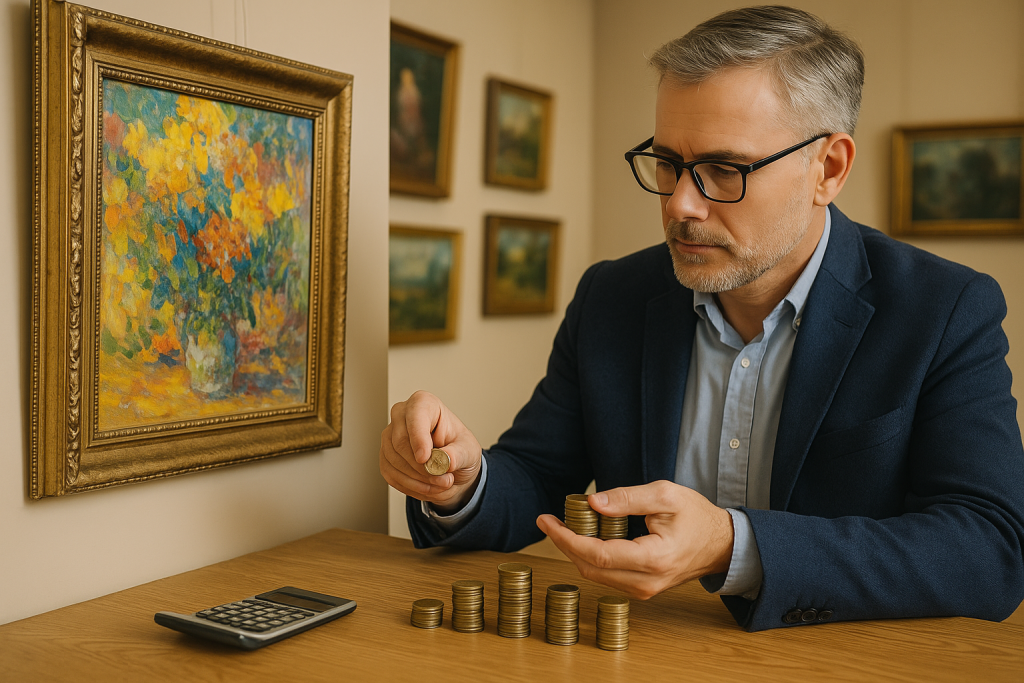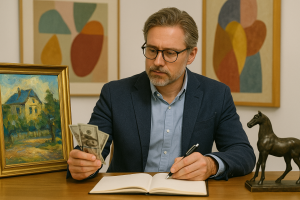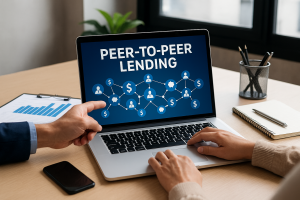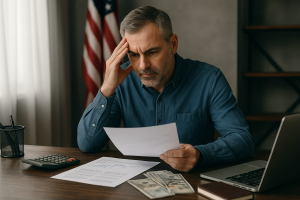Investing in art and collectibles has become an increasingly popular alternative asset strategy for many investors in the United States. This intriguing method of diversifying portfolios offers the potential for significant returns and provides a tangible and aesthetic value that traditional stocks and bonds lack.
The appeal of investing in art lies in its ability to appreciate in value over time while also serving as a decorative asset, offering investors the best of both worlds. As the art market continues to expand, savvy investors recognize the opportunity to secure unique pieces that may yield high returns in the future.
The appeal of investing in art

Investing in art offers many benefits beyond the typical financial returns. Art pieces tend to hold their value even during economic downturns, providing a stable investment platform. Moreover, the physical beauty and cultural significance associated with art and collectibles make them highly desirable assets in any financial portfolio.
The art market’s resilience during economic fluctuations isn’t its only attraction. Unique artworks can become rare commodities, much like other valuable collectibles, making them a hedge against traditional market volatility. Many collectors find pleasure in acquiring and displaying pieces, adding an emotional component to this investment that stocks simply can’t offer.
Navigating the art investment landscape
Successfully investing in art requires more than just capital; it necessitates a deep understanding of art trends and market demands. Investors should start by researching the artists and movements that show promise, aiming to distinguish which pieces are likely to appreciate in value.
Additionally, working with art advisors or attending auctions can provide invaluable insights into the market. Leveraging the expertise of industry professionals often helps novice investors make decisions that align with market dynamics and personal investment goals. The art market, while lucrative, demands a nuanced approach that balances passion with strategic financial planning.
Strategies to capitalize on art investments
To maximize success, investors should consider diversification within their art investment portfolio. This involves purchasing pieces across different art periods, styles, and artists, minimizing risks associated with market volatility. Such diversification can also open up opportunities to discover underappreciated artists whose works could substantially increase in value.
Building relationships with art galleries and dealers can also be advantageous. These connections often provide early access to promising artworks and emerging artists, giving investors a competitive edge. Additionally, maintaining a well-documented provenance and authenticity of the pieces can enhance their future resale value, securing better returns on investment.
Implementing practical investment techniques
A practical approach to investing in art involves setting clear financial goals and timelines. Identify your risk tolerance and desired return on investment before diving into the market. Art investments should complement your overall portfolio strategy, ensuring they align with your financial objectives and available capital.
Regular market analysis and reassessment of your art assets will help in maintaining a dynamic portfolio. Stay informed about market shifts and emerging trends that could affect the value of your investments. By continuously educating yourself and adapting your strategies, you can ensure that your art collection not only thrives in value but also enriches your personal space.
A rewarding future in art investment
For those who appreciate both the aesthetic and financial potential of art, investing in art represents a fulfilling opportunity. With a strategic approach, an informed understanding of the market, and a passion for artistic expression, art investments can effectively enhance any financial portfolio. As interest in this alternative asset grows, the prospects for lucrative returns continue to expand.
Ultimately, the journey of investing in art and collectibles is one of both financial acumen and personal fulfillment. As you cultivate a deeper appreciation of the pieces you acquire and their intrinsic value, you’ll find that investing in art is not just about the yields but the journey of discovery and appreciation that accompanies it.






